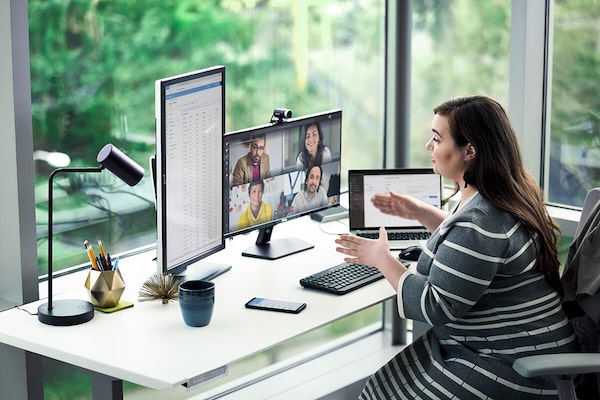
Supplied
The pandemic forced organizations to rethink how and where work is done — a change that will redefine the post-pandemic workplace. As Microsoft’s 2021 Work Trend Index shows, three-quarters of workers surveyed want flexible remote work options to continue, while more than two-thirds want more in-person time with their teams.
Extreme flexibility and hybrid work are here to stay, the report shows, and the more successful organizations will be those that take advantage of this fundamental shift.
“This is an incredible opportunity for every organization to think about a new operating model,” says Jason Brommet, modern work and security business group lead with Microsoft Canada.
For many employers, it will mean updating their corporate culture — everything from policies and procedures to data and technology — to foster a more flexible and inclusive workplace. The changes should also include redefining the meaning of productivity and paying closer attention to employee wellbeing, which has suffered since the pandemic started.
Empowering employee flexibility and collaboration
Adaptability should be at the centre of employer decision-making in the new hybrid work environment, Mr. Brommet says. Companies need to develop policies that give employees “the flexibility to choose when and where and how they work.”
The Microsoft survey shows many businesses are moving in that direction: 66 per cent of decision-makers said they’re looking at redesigning physical spaces to better accommodate hybrid work environments.
Employers also need to ensure they have the appropriate digital tools to thrive in the hybrid workplace. Mr. Brommet says the technology should be equally accessible to both employees in the office as well as those working remotely.
For example, meeting technology must ensure that remote workers get similar access as those physically in the room, instead of being relegated to a static-filled phone line with no ability to see or comment on a presentation.
It also means having great collaborative tools, such as Microsoft Teams, which has added new features like “Together Mode” and “Front Row,” which mimic what it’s like to be on stage giving a presentation or a participant in the audience.
“Technology is the great connector and enabler,” he says. “But at its core, it’s about putting people at the centre… and it needs to create digitally equitable experiences.”
Focus on health and wellbeing
Supporting health and wellbeing will also be a focus for organizations in the future, particularly after the rise in employee burnout during the pandemic, as many juggled both personal and work challenges.
“A lot of organizations got a huge wake-up call about how important the wellbeing of their people is to their business continuity and success,” says Paula Allen, the global leader and senior vice-president of research and total wellbeing for LifeWorks, a Toronto-based provider of employee assistance programs and other services.
“There was this real risk of people not being able to work because of their circumstances; the anxiety started to come out in a very real way as opposed to being in the shadows.”
The uncertainty and change brought on by the pandemic have also exacerbated and sparked mental health challenges, Ms. Allen says.
“Change is a trigger — even positive change can increase stress,” she says. “Organizations have to notch up their focus on wellbeing.”
She believes companies need to offer a broader range of well-communicated and virtually accessible employee assistance programs, including mental health supports. Staff also need to be reminded regularly about these services — at meetings, on staff calls and in e-mails.
Ms. Allen also suggests leaders and managers receive ongoing training to conduct regular staff check-ins and guide them to any support they need.
Leaders can also support the wellbeing of their employees by encouraging them to take breaks during the workday and disconnect from the job at the end of the day to recharge, Mr. Brommet says.
“Overworking should not be the thing that defines us,” he says. “With the lines between work and home blurred, it’s so easy to sit down at the start of the day and not lift your head up until the end. And that’s such a bad practice.”
This year, Microsoft gave staff five wellness days, acknowledging that employees needed more breaks amid the stress of the pandemic. The company also introduced Viva, an employee experience platform that includes communication, knowledge, learning, resources and insights, directly in the tools they use every day.
Managers “need to model the way” regarding team norms and practices, Mr. Brommet says. “Leaders can set so much of the tone that influences things like flexibility and culture.”
Ms. Allen agrees, noting the mental strain of the pandemic has been a driver of turnover, and employers need to counter that by giving staff “recognition and validation.” Most importantly, companies need to “make sure employees understand that their wellbeing is going to be prioritized.”
Advertising feature produced by Globe Content Studio with Microsoft. The Globe’s editorial department was not involved.